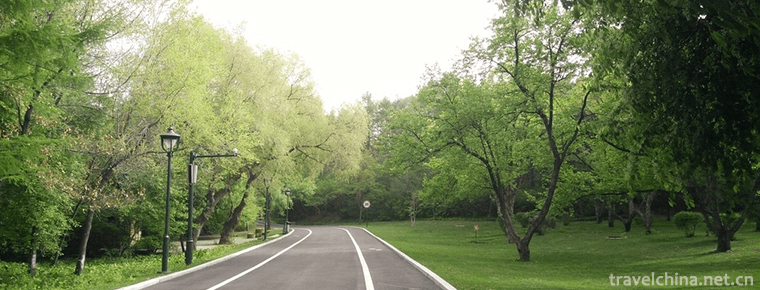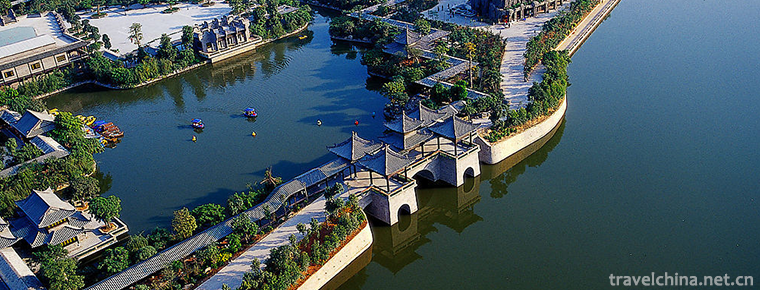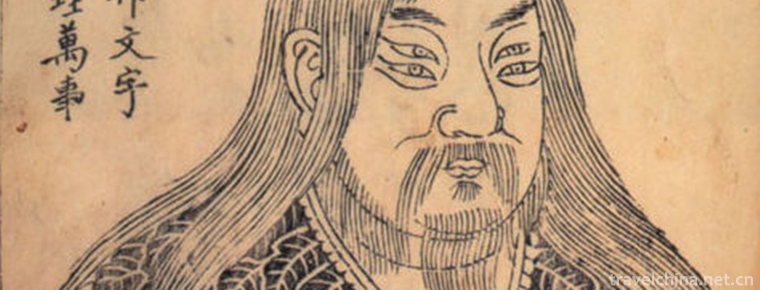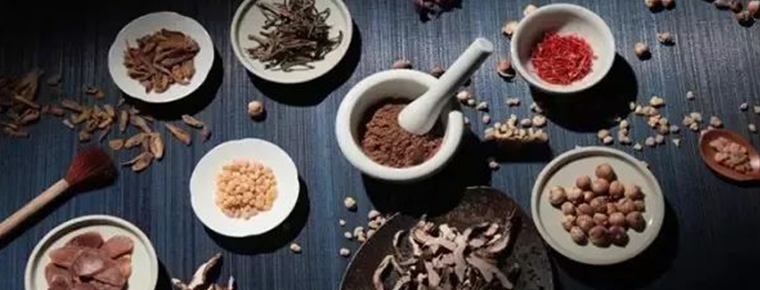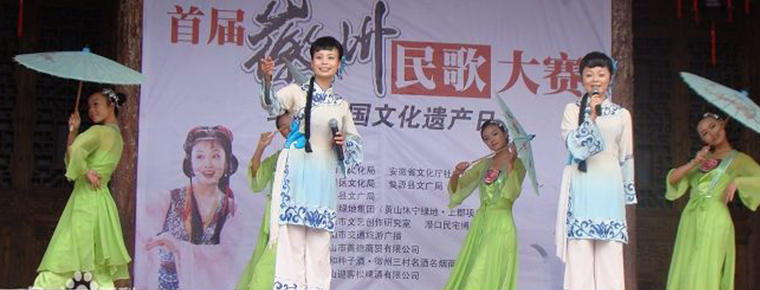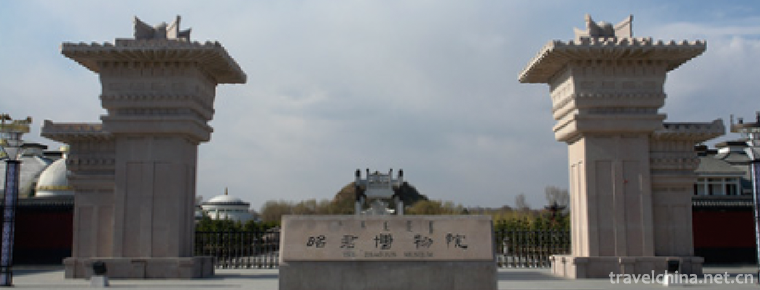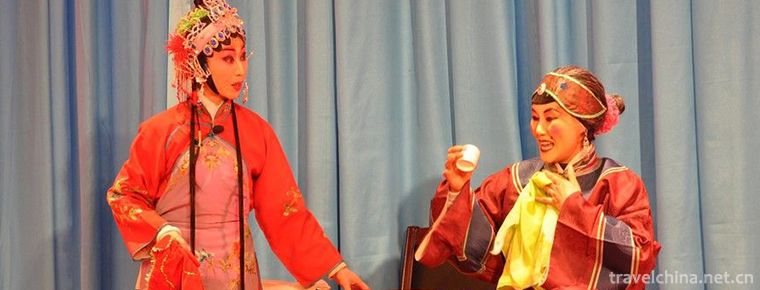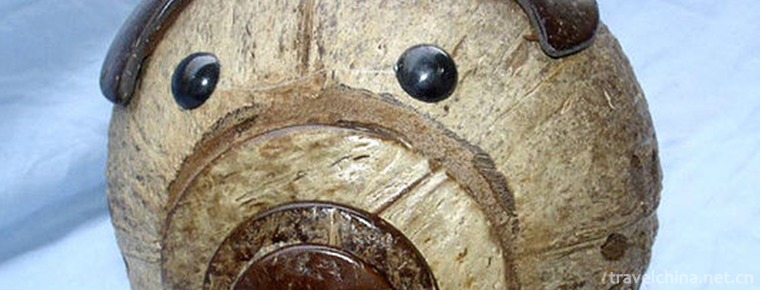Tin carving
Tin carving
Tin sculpture, the traditional Chinese sculpture art, is a unique craft in China and even in the world. It has a history of more than 300 years. The craft has a long history and has a long history. In Ming and Qing Dynasties, tin sculpture was very popular among Chinese people. It has written records. Laiwu tin products can be traced back to 1676 A.D. At that time, tin products were mostly common commodities. On the basis of this, the founder of Wang Jiaxi tin sculpture in Xiguan of Laiwu selected high-quality tin with excellent texture and color, and made elaborate and meticulous works to explore and create artistic products that can be mainly appreciated and applied. When it came out, it was greeted by the court and became a tribute.
Tin carvings are mostly used to make ritual props, Buddhist rituals, teapots, wine pots, tea candles, candlesticks, bowls, chopsticks, spoons and other daily necessities.
In November 2014, tin sculpture was listed in the National Intangible Cultural Heritage Representative project list expansion project list.
geographical environment
Laiwu is located in the middle of Shandong Province, in the Taiyi Mountains of central Shandong Province, adjacent to the birthplace of Longshan culture and Dawenkou culture. There are important relics of the Neolithic period in China, such as Wenyang Site and the Battle of the Long Spoon. There are many natural and cultural landscapes in the area. The Dawen River flows west, the Lianhuashan Ice Falls are spectacular, and Kowloon lies in the Grand Canyon. The sage Confucius visited Laiwu during his travels around various countries and left many historical relics and beautiful legends, such as "Confucius'View of Rites" and "Jiagu". Alliance, etc. During the Spring and Autumn Period and the Warring States Period, Laiwu was situated in the central part of the land of Qilu, where Qilu culture bordered and mingled. The thought collision and mutual influence of "Qi Gui Innovation and Lu Zun Tradition" formed the characteristics of Laiwu people's unrestrained, arrogant and not arrogant.
Historically, Laiwu was also an important smelting center during the Spring and Autumn and Warring States Periods. The abundant coal, copper, iron and tin resources in Laiwu provided necessary material conditions for smelting for thousands of years without decline. The important smelting sites included Zhenjiaodong, Tongshan, Nanye Coal Mine and Huangshishan Mine pit. A large number of cassiterite and tin slag found in these sites were sufficient to witness Laiwu's tin smelting. In addition, the bronze and coin foundry industry of Laiwu in the Spring and Autumn Period and Warring States Period was relatively developed, and a large number of bronzes and coins were unearthed. To cast these objects, "tin" was an indispensable raw material. The mining and metallurgical civilization of Laiwu for thousands of years laid a solid material and cultural foundation for the birth and inheritance and development of Laiwu tin carving technology.
Laiwu tin carving is the continuation and historical witness of thousands of years of mining and metallurgical fame.
Tin sculpture content
Laiwu tin carvings can be divided into ritual utensils, drinking utensils, lamps and candles, smokers, stationery, cosmetic boxes, souvenir badges, commemorative coins, relief pendants, vases, storage supplies and so on.
According to the content and form of expression, it can be divided into flowers, birds, fish, insects, poems and songs, dragons, phoenixes, animals, mascots, characters, legends and stories, etc., up to 100 kinds.
Characteristics and Works
Laiwu tin carving has its distinct local characteristics in material, shape and production techniques.
_The pure tin with 99.9% purity of Yunxi Brand is used on the materials, and no other materials are added to keep the properties of pure tin green metal from being destroyed. Yunxi brand 99.9% pure tin is delicate in texture, mild, slightly pearl-colored, flexible, easy to hand-hammer various shapes, good plasticity, not only can be carved but also can be used for soldering iron sculpture, which is an important feature in material selection.
(2) Compact in shape, simple and exquisite, natural in collection and placing, coordinated in proportion, through the shape, decoration, texture and other artistic means to reflect the charm and meaning of the work.
The charm of the shape is embodied in the size, circle, pitch, opening and placing of the shape, the changes of the lines such as straightness, relaxation, urgency, length, strength and weakness, giving people a sense of music and charm; the design follows the principle of "gentle, then gentleman", the content and form are integrated and unified. In order to achieve the perfect combination of application and aesthetic feeling, create a harmony, bring people a kind of spiritual enjoyment of order, ease and stability.
(3) In content, people's thoughts and wishes are expressed by means of regional cultural stories, legends, beautiful animals, flowers and birds, poems and so on, and people's positive and upward spiritual yearning is placed.
_The production techniques include sheet metal blanking, forging, chisel, sculpture, sculpture, welding, mosaic, multi-material combination, concave carving, line carving and relief, and the surface polishing degree can reach more than 10 levels. More importantly, many shapes are shaped by soldering iron, which is the main characteristic of the production techniques. 。
The tools used in tin carving are knives, files, hammers, boards, special-shaped scissors of different sizes, rules, carving knives, carving knives of various shapes, anvils, tableware and fixtures, and the materials are: 99.9% Yunxi Brand fine tin, copper wire, copper plate, crystal, glass, high-grade precious wood, high-grade jade, gemstones, rattan skin, violet sand, etc.
Cultural Value
Tin carving in Ming and Qing Dynasties was very popular among the people. Laiwu tin-making art was highly developed during the Qianlong period of the Qing Dynasty, reaching the peak of the development of Laiwu tin processing technology. At that time, there were not less than 1,000 people engaged in tin processing and manufacturing, and most of the utensils were household goods and ceremonial utensils. According to legend, at that time, there were calls for tin selling everywhere. Processing workshops were mainly distributed in the area of Yangzhuang Town and Zhaili Town. Because most of the people advocated tin products, tin products were more valuable for marriage, funeral, marriage and gift to relatives and friends. Therefore, tin processing became one of the important handicraft industries in Laiwu at that time, and also the owner of villagers'leisure time. We need financial resources. On this basis, the founder of Laiwu tin sculpture, choosing fine tin with excellent texture, color and lustre, made elaborate works and groped for the creation of art products mainly for the purpose of viewing, which were collected in the folk.
At that time, the Wang family of Xiguan in Laicheng was the first representative of tin processing art. In 1780, the Wangjia of Xiguan Tin Family in Laiwu City created the first batch of tin carvings, a complete set of tea sets and wine sets. Its tin products have escaped from the category of simple daily necessities processing and rose to the artistic level with artistic appreciation as the theme and practicality. Later, after several generations of efforts, the tin carvings have been made. With the continuous improvement of carving technology and the creative application of relief art and mosaic techniques, unique craft skills and exquisite conceptual design have been formed. The tin carving products produced by this technology and technology are clean, bright, elegant, exquisite and unique, and have become the masters of tin products in Laiwu at that time. Scholars and refined scholars came to Wang's house to customize various utensils, and could own a tin sculpture of Wang's family, which became the symbol of the social status and status of the upper class at that time. Since then, "Laiwu tin carving" is famous for its beautiful appearance, exquisite skills and unique style.
Tin sculpture came into being and became a tribute by the court. The Manchu-Han Tin tableware in Qufu Museum is made by Wang Yepu (character Ji), the third generation heir of King Lu Workshop. It is a dowry specially designed by Qianlong for his daughter when she married. The information is recorded as: "Qianlong's daughter married to Qufu and was made by people sent from Beijing to Laiwu". In 1914, tin sculpture was awarded two gold medals of "skillful hands like gods" and "skillful work of nature" at the United States Global Goods Exhibition, and the Nanyang Exhibition was awarded the best dragon medal. Wang Junting, the fifth generation heir of Lu Wang Workshop, won the International Silver Prize at the Panama World Expo in 1915. From then on, Shu went out of the country and into the world.
realistic meaning
Laiwu tin carving occupies an important position in the cultural industry in the whole Laiwu area, and it is also a unique skill in the whole Shandong Province. It is an excellent folk art in Shandong Province and a relic of Laiwu mining and metallurgical culture. There are two practical significance in excavating, rescuing and protecting Laiwu tin carving art.
(1) Academic value. Laiwu tin carving's special and superb processing skills enrich our metal processing technology, especially the processing technology of tin products. More importantly, it really records the development process of metal processing technology and the rise and fall of metal processing industry since Ming and Qing Dynasties. Its special production technology and artistic language greatly enrich the thought and artistic connotation of traditional metal processing industry. Digging, rescuing and protecting this national treasure, making it inherited and making Laiwu Xidiao glow with the times, is undoubtedly of great historical and practical significance for the promotion of Chinese traditional culture.
(2) Aesthetic value. With the development of economy and the improvement of population's comprehensive quality, people's demand for spirit and culture is increasing day by day, and people's aesthetic level is also getting higher and higher. Laiwu tin sculpture gradually changes from its traditional use value to aesthetic value. To a certain extent, it adapts to the value trend of people's pursuit of change and beauty, and caters to people's advocation of natural harmony and simplicity. Nowadays, with the development and progress of modern technology, the authentic aesthetic taste of Laiwu tin sculpture is bound to enter a new era of development with the development of society.
Laiwu tin sculpture production process is complex, professional and technical requirements are high, the production cycle of a work often lasts for half a month, a month, making a fine product from design to shaping, some take half a year or more, so it is difficult to form large-scale batch production, which to some extent restricts its market development. Especially in modern society, many young people are not interested in traditional handicraft production skills, personnel training and recruitment has become a major problem, it is difficult to recruit practitioners, coupled with this is a special craft, personnel training cycle is long, investment is large, more need practitioners a kind of enthusiasm and divisional basis, Laiwu tin carving successor is difficult to change the status quo. Faced with the above situation, it is urgent to rescue and protect Laiwu tin sculpture art.
According to the development of Laiwu's culture and economy, through scientific analysis and demonstration, and according to local conditions, this paper puts forward a scientific protection and development plan and plans a blueprint for the excavation, protection and development of Laiwu's tin sculpture art in the next five years.
protective measures
Static protection
1. Further comprehensive and in-depth census of tin carving, thoroughly understand the development and inheritance of Laiwu tin carving art, and obtain first-hand information;
2. To classify, sort out, archive and make good image data for permanent preservation.
3. Organize some experts to inspect and scientifically prove Laiwu tin carving technology from smelting, casting and aesthetic aspects, and compile series on Laiwu tin carving art.
Dynamic protection
1. Focus on collecting and sorting out the surviving tin sculptures in Laiwu. Taking Luwang Workshop as the main body and joining Shunxing Handicraft Factory as the main body, the Laiwu tin sculpture and treasure exhibition hall will be established as soon as possible. By 2007, the government will take the lead in planning and building a number of signature billboards with the theme of Laiwu tin sculpture art in the key sections of Laiwu urban area, and further implementing the strategy of going out. With the help of various exhibitions, the promotion of Laiwu tin sculpture art projects will be well done, and one or two national tour exhibitions will be organized annually to expand the national popularity of Laiwu tin sculpture.
2. Relying on Luwang Workshop and Shunxing Handicraft Shop, Laiwu Tin Sculpture Art Research Institute will be established in 2008. It will be affiliated with the well-known Chinese Academy of Arts and Crafts. It also engages well-known experts and professors as art consultants all the year round, expands its membership, excavates the historical, cultural and aesthetic value of Laiwu Tin Sculpture, and does a good job in product development and project promotion. With the favorable opportunity of the Olympic Games, a series of tin sculpture products with the theme of the Olympic Games were launched, and good publicity and promotion were made to improve the national popularity of Laiwu tin sculpture.
3. While doing a good job in modern marketing, with the help of funds, we should further excavate and organize the traditional tin carving process, and find a new way to protect and develop both traditional and modern. By 2009, we will establish the Laiwu tin carving art Memorial hall, exhibit the tin carving works left over from different periods, and organize the inheritors of Laiwu tin carving to present their art on the spot in the memorial hall.
4. Do a good job of training Laiwu tin sculpture practitioners, train a group of successors who love Laiwu tin sculpture art and handicraft skills, expand the team, and successors, Laiwu tin sculpture art of this century craft inheritance.
market potential
Tin sculpture is a unique craft in China and even in the world. It has a history of more than 300 years. It has a strong traditional cultural heritage and is the most reserved rarity.
After the reform and opening up, with the concern and support of the government, a group of inheritors of Laiwu tin carving shouldered the important task of revitalizing Laiwu tin carving art. They were unknown and persevering. On the basis of inheriting the traditional production techniques of tin carving art, they were keen to innovate and explore boldly, and realized the bold grafting of traditional craft and modern processing technology and modern aesthetic concept, which made Laiwu tin carving art pass on. Unified handicraft glows with the glory of the times. The representative ones are Wang Shengliang, Wang Shengtang, Wang Shengcai, Wang Xingjun, Wang Qianjun and so on. In particular, Wang Qianjun, the eighth generation, said, "I believe that the traditional national culture must be fully integrated with the market in order to be able to be full of infinite vitality. Therefore, in order to spread the fireworks of tin carving technology, I will continue to accept new things. Wang Qianjun said firmly. In 2002, he went to the Academy of Fine Arts of Tsinghua University for further study at his own expense. Through cooperation with professors, teachers and graduate students of the Academy of Fine Arts of Tsinghua University, his skills have been greatly improved. Rich cultural connotations, fresh artistic ideas, innovative design concepts and outstanding taste have been incorporated into his design works.
In 2003, King Lu Workshop cooperated with the Academy of Fine Arts of Tsinghua University to develop tin carving technology. In 2004, Wang Qianjun participated in two large-scale exhibitions in Beijing and Shanghai, applied for members of Alibaba, Jin Jiuyi and China Craft Network, and opened his own website, successfully promoting the Laiwu brand of Lu Wang Workshop. The tin carving art of Luwang Workshop has a history of 300 years. It has won the gold medal of Shandong Folk Arts and Crafts Exposition in 1996, the excellent award of Shandong Second Tourist Commodity Design Competition in 2004, the honorary gold medal of "Chinese Pride" awarded by the Ministry of Culture in 2005, the "Contribution Award of Chinese Traditional Industrial Culture" awarded by China Enterprise Culture Promotion Association in 2005, and the Chinese Enterprises in 2005. The Culture Promotion Association has awarded the honorary title of "Top 100 Units of China's Old Brand Enterprises".
Laiwu Xiguan Wangjia constantly carries forward the art of tin sculpture, creating "auspicious cylinder" miniature, silver luster, noble temperament, is a rare handed down treasure, this cylinder is praised by the Academy of Fine Arts of Tsinghua University as "the essence of contemporary tin sculpture"; Wang Jiaxi's representative works of tin sculpture are three layers of ancient incense stove, exquisite sculpture, vivid image of Kowloon, or Tengyun, or opera pearls, vivid and desirous to fly. There are crane wax tables, tableware, bottles, boxes and so on. These works are exquisitely carved and are regarded as precious products and exported to Southeast Asian countries. Wang Lei, the heir of the seven generations of Laiwu tin carving, inherits and develops traditional crafts, innovates boldly and applies the two major carving techniques of Yin and Yang and inlaying crafts. His works are simple in shape and concise and quick in line. His pairs of Panlong vases are high in tin carving art. Feng's new work, on a vase with a high neck and a big belly, has two relief dragons with opposite openings, which are upside down on the vase body, two pairs of jade dragon eyes, copper eye rings and four copper beards, such as snakes in the fog. The whole work is beautiful and elegant, exquisite and exquisite. There are also "Panlong vase", "Crane wax platform", "couple crane", "Panlong wine utensil", "Longding Fumigator", "Ding-style hot wine utensil", "Jiulong Ding hot wine utensil" and other works, which are exquisitely designed and carved. They have both use value and high artistic appreciation and collection value.
Laiwu tin sculpture has a long history. In Ming and Qing Dynasties, Laiwu tin industry became famous in China. A craftsman named Wang applied mosaic art and relief art creatively to tin sculpture in Laiwu Xiguan, which promoted the development of Laiwu tin industry and established the King Lu Workshop. The tin carving products produced by this technology and technology are clean, bright, elegant and unique, which shows the exquisite skills and wisdom of a generation of craftsmen. Wang Zhen, the descendant of Xiguan Wang family and his descendants, Wang Shengliang and Wang Shengtang, are innovative on the basis of inheriting the traditional crafts of their predecessors. They carefully carved various utensils, exquisite craftsmanship, ingenious workmanship; strong national style, practical display two appropriate, unique, renowned art world. Among them, the large-scale "Crane Wax Platform" is full of fun; pairs of Panlong vases, on a high neck and big belly vase, two relief dragons are upside down on the vase body, lifelike and amazing. Laiwu Xidiao is a wonderful flower of Chinese folk art and is widely loved by fans.


-
Shenyang Botanical Garden
Shenyang Botanical Garden, located in Dongling District of Shenyang, also known as Shenyang World Expo Garden and Shenyang World Horticulture Expo Garden.
Views: 222 Time 2018-12-02 -
Limutai Natural Scenic Area
Limutai Natural Scenic Spot is located at the northernmost end of Tianjin, known as "Tianjin Arctic". In the scenic area, the peak forest and canyon are strong and dangerous.
Views: 171 Time 2019-01-29 -
Yuehui Garden Scenic Spot
Yuehui Garden is a large private garden located in Dongguan, Guangdong Province. It is the representative of Lingnan Garden. There are 108 garden attractions such as buildings.
Views: 131 Time 2019-03-09 -
Legend of Cang Jie
Cangjie Legend is an ancient Chinese folklore. The story of Cangjie's writing originated from the Yan and Huang Dynasties and has a history of 5,000 years. Legend has it that in .
Views: 182 Time 2019-04-04 -
Traditional fragrance making techniques
Fragrance, originated from herbs, not only fragrance overflowing nose, but also eliminating pollution, curing illness, recuperating body and mind, in a relaxed and happy heart, helping people calm dow.
Views: 125 Time 2019-04-21 -
Huizhou folk songs
Huizhou folk song is an ancient traditional folk art in Huizhou area. It is rich in content and diverse in genres, including chants, folk songs, minors, Buddhist and Taoist songs,.
Views: 419 Time 2019-05-04 -
Legend of Wang Zhaojun
Wang Zhaojun's legend is one of the local folklores in Xingshan County, Hubei Province. Wang Zhaojun, one of the four beautiful women in ancient China, is the embodiment of beauty, the messenger of pe.
Views: 113 Time 2019-06-26 -
Xilu Bangkok
Xilu Bangzi a Xilu Bangzi is an ancient traditional opera. Now the embryonic form of Hebei Bangzi was formed in Qingdaoguang period. Its predecessor is Shanshan-Shaanxi Bangzi, which was introduced in.
Views: 196 Time 2019-07-01 -
Coconut carving
Coconut sculpture is made of coconut shell, coconut palm and coconut wood as raw materials, and is carved into various practical products and plastic arts by hand. Coconut sculpture is one of the spec.
Views: 144 Time 2019-07-11 -
Printing Mud Making Skills
Lu'an Indian Mud is a traditional handicraft in Jing'an District of Shanghai. It was initiated by Zhang Lu'an. The process is complicated and the finished product is kept for a long time. The printing.
Views: 354 Time 2019-07-13 -
Sichuan Normal University
Sichuan Normal University is one of the key universities in Sichuan Province and the first national universities to implement the "Basic Capacity Building Project of Colleges and Universities in .
Views: 137 Time 2019-08-31 -
Danba pig leg
Xiang Pigs are mainly green fodder. They never feed artificial feed. They graze with cattle and sheep all year round. They have long mouth and small ears, narrow head, straight forehead, narrow body and protruding back, strong limbs and fast running..
Views: 234 Time 2020-12-06
